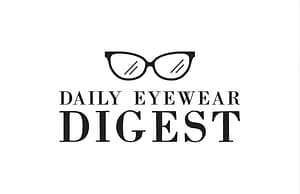Children’s eye health is a crucial aspect of their overall development. Proper vision is essential for learning, physical coordination, and social interaction. Early detection and management of eye problems can prevent more serious issues later in life. Understanding the importance of children’s eye health can help ensure that they grow up with the best possible vision.
Anatomy of a Child’s Eye
Children’s eyes are different from adults’ eyes, not just in size but also in how they develop. From birth, a child’s eyes undergo significant changes. The first few years of life are critical for vision development, as the brain and eyes work together to process visual information. This period is when many of the eye’s structures mature, making early monitoring vital.
Importance of Early Vision Screening
Early vision screening is essential for detecting potential problems before they affect a child’s development. Pediatricians typically recommend the first eye exam at around six months of age, with regular follow-ups during early childhood. These screenings can identify issues such as refractive errors, strabismus, and amblyopia, allowing for timely intervention.
Common Eye Conditions in Children
Several eye conditions can affect children, including:
Refractive Errors: Myopia (nearsightedness), hyperopia (farsightedness), and astigmatism are common in children and can affect their ability to see clearly at different distances.
Amblyopia (Lazy Eye): This condition occurs when one eye is weaker than the other, leading to poor vision in the affected eye.
Strabismus (Crossed Eyes): When the eyes do not align properly, it can lead to double vision or the suppression of the image from one eye.
Congenital Cataracts: Present at birth, these cloud the lens of the eye and can significantly impair vision.
Recognizing Signs of Eye Problems in Children
Parents play a key role in detecting early signs of eye problems. Behavioral indicators like squinting, covering one eye, or difficulty following objects can signal an issue. Physical signs, such as misaligned eyes or frequent rubbing, also warrant attention. Early intervention can prevent the development of more severe conditions.
Impact of Digital Screens on Children’s Eye Health
With the increase in screen time among children, concerns about digital eye strain have risen. Prolonged exposure to screens can cause symptoms like eye fatigue, headaches, and even long-term issues like myopia. Limiting screen time, encouraging regular breaks, and ensuring proper lighting can help protect children’s eyes from the effects of digital devices.
Protecting Children’s Eyes During Outdoor Activities
Outdoor play is essential for a child’s physical health, but it also poses risks to their eyes. UV protection is crucial to prevent damage from the sun’s harmful rays. Choosing sunglasses with 100% UV protection and ensuring that children wear protective eyewear during sports can prevent injuries and long-term eye damage.
Nutrition and Eye Health in Children
A balanced diet rich in vitamins and minerals is vital for maintaining good vision. Nutrients like Vitamin A, C, E, and Omega-3 fatty acids play significant roles in eye health. Including foods such as carrots, leafy greens, and fish in a child’s diet can support their vision development and prevent eye problems.
The Role of Genetics in Vision Development
Genetics plays a significant role in determining a child’s eye health. Conditions like myopia, strabismus, and certain hereditary diseases can be passed down from parents. Understanding family history and discussing it with an eye care professional can help in taking preventive measures and planning regular check-ups.
Vision Therapy for Children
Vision therapy is a specialized program designed to improve visual skills and treat conditions like amblyopia and strabismus. It involves a series of exercises and activities tailored to a child’s specific needs. Many children benefit from vision therapy, particularly when started early, as it can help strengthen the connection between the eyes and brain.
The Importance of Proper Eyewear for Children
Choosing the right eyewear is essential for children with vision problems. Glasses should fit well and be durable enough to withstand daily activities. For older children, contact lenses may be an option, but they require proper hygiene and care. Protective eyewear is also important for sports and outdoor activities to prevent injuries.
School and Eye Health: Creating a Vision-Friendly Environment
The classroom can present challenges for children with vision problems. Ensuring that children have clear vision in school is essential for their academic success. Teachers can support eye health by providing adequate lighting, allowing regular breaks during screen-based activities, and seating children with vision issues near the front.
Educating Children about Eye Health
Teaching children about eye health from a young age can instill lifelong habits. Simple activities like reading in good light, taking breaks from screens, and eating a balanced diet can be fun and educational. Involving children in their eye care routine, like reminding them to wear sunglasses, can also empower them to take responsibility for their health.
Addressing Eye Health in Special Needs Children
Children with special needs often face unique challenges when it comes to eye health. They may be more susceptible to certain conditions or may have difficulty communicating their vision problems. Tailored approaches, such as using specialized equipment or working closely with pediatric eye care professionals, can help address these challenges effectively.
Frequently Asked Questions about Children’s Eye Health
How can I tell if my child has a vision problem?
Look for signs like squinting, frequent eye rubbing, or difficulty focusing on objects. Regular eye exams are crucial for early detection.
What should I expect during my child’s first eye exam?
The exam will likely include tests for visual acuity, eye alignment, and overall eye health. It’s a simple process that is usually non-invasive and quick.
Can eye problems in children be cured or outgrown?
Some conditions, like mild refractive errors, can change as a child grows, but others require ongoing management. Early treatment is often key to improvement.
How can I protect my child’s eyes from screens?
Limit screen time, encourage breaks every 20 minutes, and ensure that screens are positioned at a comfortable distance with proper lighting.
What role does diet play in maintaining my child’s eye health?
A diet rich in vitamins, minerals, and antioxidants supports eye health and can prevent certain conditions. Foods like carrots, leafy greens, and fish are particularly beneficial.
Are contact lenses safe for children?
With proper care and supervision, contact lenses can be safe for older children. However, they require responsibility to maintain hygiene and avoid complications.
Conclusion: Ensuring Lifelong Vision Health
Maintaining children’s eye health is a continuous process that involves regular eye exams, proper nutrition, and protective measures. Early detection and treatment of eye problems can have a significant impact on a child’s overall development. By being proactive, parents can ensure that their children enjoy clear vision and good eye health throughout their lives.

